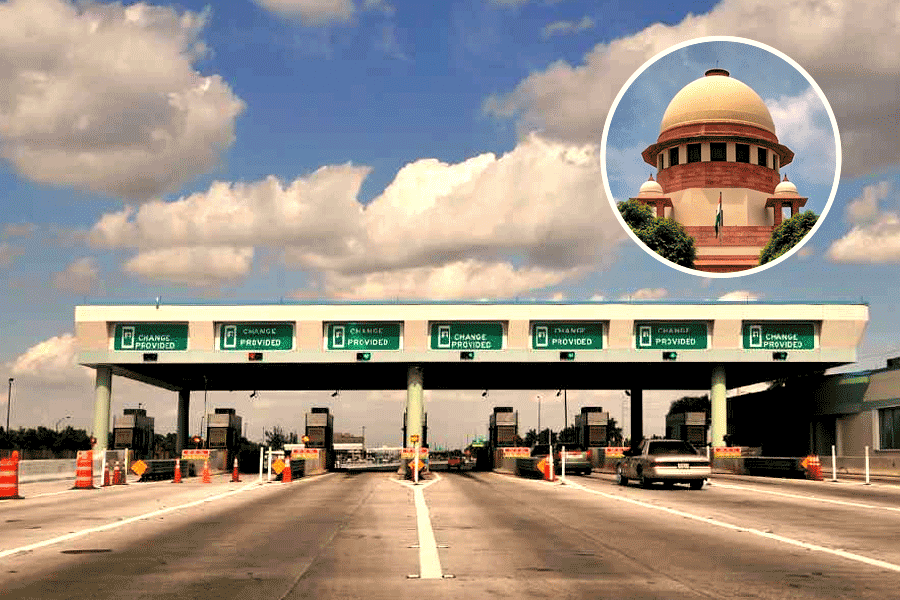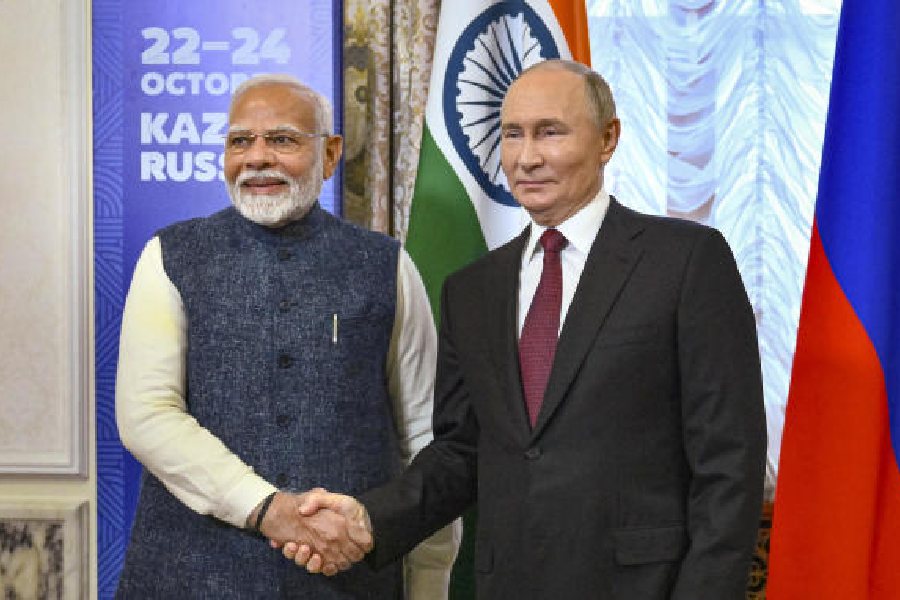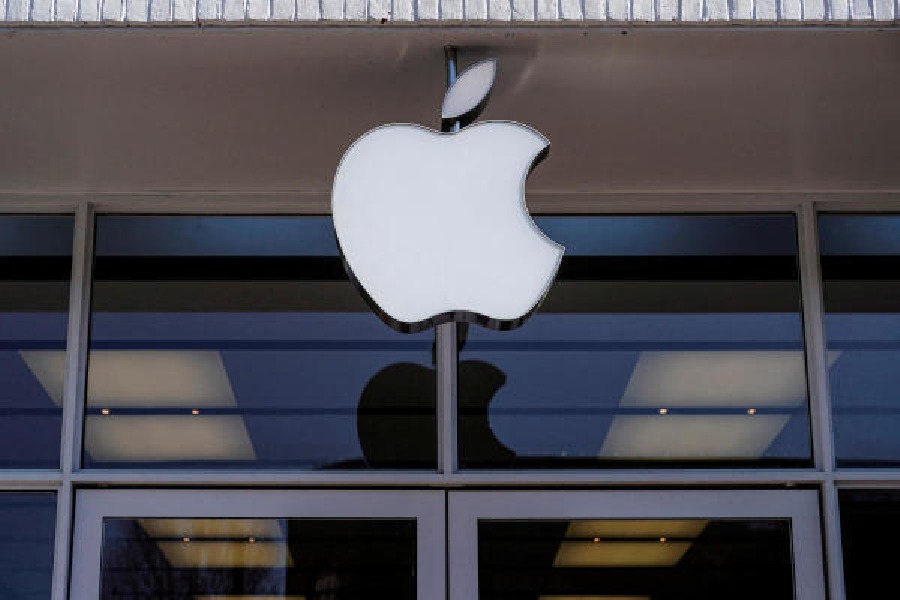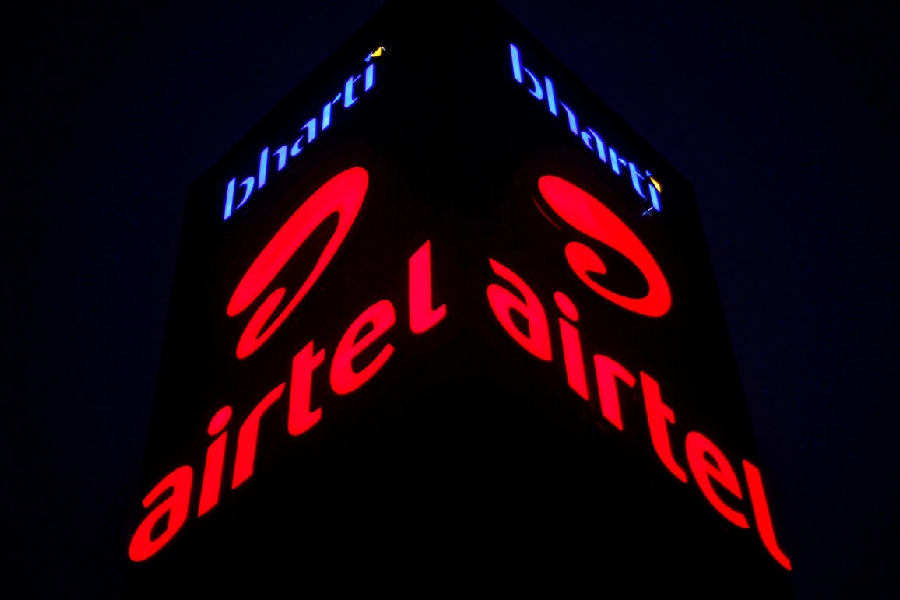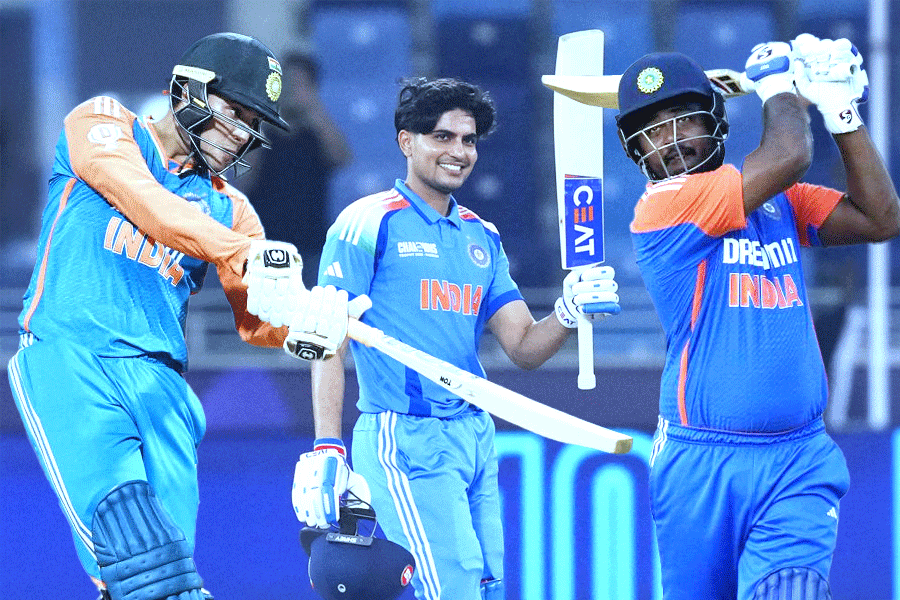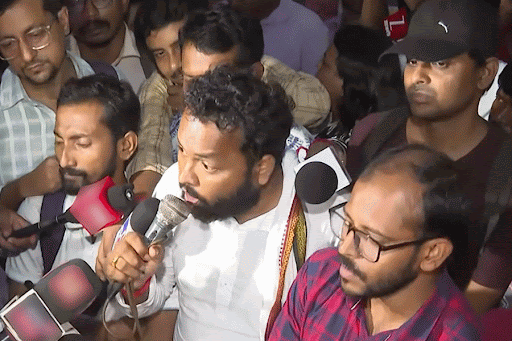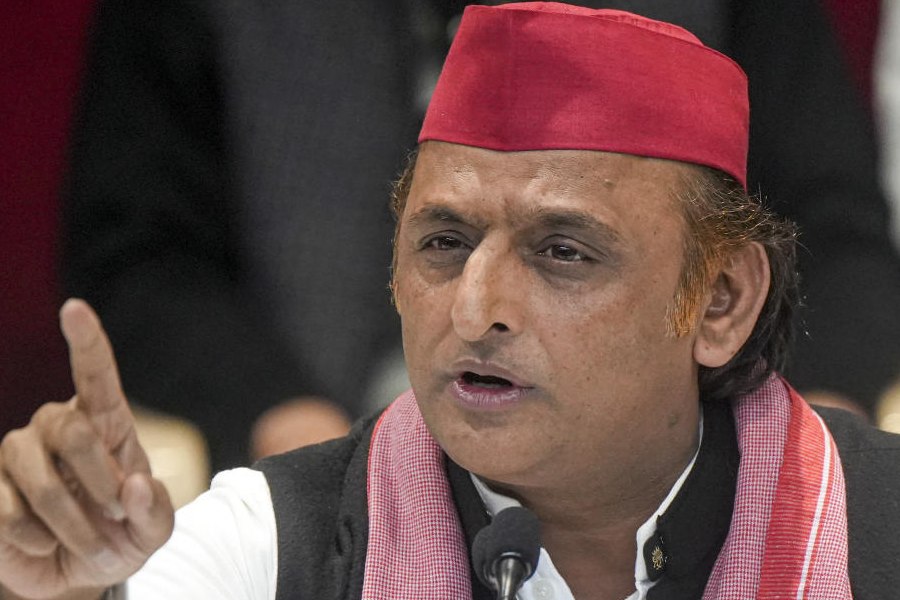 |
 |
| The interiors of a Tommy Hilfiger store in Mumbai; (above) Darshan Mehta, president, Arvind Brands |
Drive down Mumbai’s Linking Road and the transformation hits you in the face. Fashion is getting a new look and we aren’t talking about lifestyle stores such as Shoppers’ Stop. The country’s largest clothing companies are going glitzy and it’s on show at one large-format destination store after another.
So if there’s a swank Louis Philippe store and a hip Esprit store, there are also Arrow Sport and Arrow stores. And for a luxury fit, there’s Tommy Hilfiger with everything from clothes to watches to fragrances to even linen.
The top textile and clothing companies are getting closer to their customers. And they’ve decided that the only way to cut through the clutter is to open their own stores and turn on the shop-front charm.
Take a look at Arvind Brands, a key player in the branded apparel business since the 1990s. It has now widened its product portfolio and is reaching out to new customers of all kinds. Currently, it has licences for international names like Tommy Hilfiger, Lee, Wrangler and Arrow. Now it will launch four more international brands ? Gant, Nautica, Kipling and Jansport ? in April. Nautica, Kipling and Jansport belong to VF Corporation, which also owns the Lee and Wrangler brands.
Then, there’s the A V Birla Group’s Madura Garments that’s looking to expand its portfolio and image. It’s moving even more swiftly in the high street and mall in a bid to transform itself from being a trouser and shirt company. Its Louis Philippe brand now caters to the “multiple wardrobe” needs of men today. So it has luxury, formal, semi-formal, casual, party and fashion lines and accessories.
 |
 |
| An Esprit showroom in Bangalore; (above) Vikram Rao, A V Birla Group, business head, fabric and apparel |
“We have transformed Louis Philippe and all our power brands [Van Heusen, Allen Solly and Peter England] from shirt brands to wardrobe brands and are now progressing further to make them lifestyle icons,” says Vikram Rao, business head, fabric and apparel, of the A V Birla group. The company opened over eight Louis Philippe flagship stores last year and the brand is growing at almost 25 per cent.
Some newcomers will cater to niches of the Indian clothing business that didn’t exist before. Take the high-end Gant store, which offers contemporary chic with an average shirt priced at Rs 4,000 to Rs 8,000. The first store will throw open its doors in April in Mumbai. The next destination will be Delhi this year. Then, three Nautica stores will open in Bangalore, Delhi and Chennai this spring. There will be six in all by December.
The leather fashion accessories brand, Kipling and backpack segment brand, Jansport will also be travelling their own route. Both will have stand-alone stores and corners in department stores. Arvind will, in fact, open the world’s first stand-alone Jansport store in India.
That’s not all. Arvind Brands has lined up retail expansions for its existing brands as well. It will increase its premium brand stores (Lee, Arrow and Wrangler) and Megamart factory outlets from 230 today (that includes 42-43 Megamarts) to 300 by March 2007. This includes five more Megamarts, and 15 more Arrow and Lee stores each. And the Tommy Hilfiger stores will increase from nine today to 12 by August.
“Mono-brand retailing has evolved in the country,” says Darshan Mehta, president, Arvind Brands Limited. “This [the expansions] is partly because of the retail scenario with the mall-ing of India and as high streets are also not dying,” says Mehta, who expects the company’s topline to expand by 40 per cent.
 |
| A range of menswear at the Manzoni store in Delhi |
The accent is not just on numbers though but on the store itself. For the store has become the third leg of the tripod ? the other two are the product and advertising ? on which brand-building rests. As Mehta points out, “Internationally, the store environment is helping to push the brand.”
So Abercrombie & Fitch hyped up its five-storey outlet in Manhattan six months before its opening in November. Now Diesel, which is launching a store on Bond Street in April is already raising the decibel level. And Apple’s new retail stores have shown how the right ambience can create just the right buzz around a product. “The A&F store has done amazing things for the brand in New York. The store has become a powerful communication medium,” says Mehta.
The phenomenon is happening in India too. Mehta points out, “When mono-brand retailing started, because there were no high-quality destinations, the brands were compelled to open stores. But the retailing was more functional then. Today, the store is operating not only as a distribution point but as a total advertising medium.”
And it’s not just the merchandise that’s creating the brand salience but the props too, whether it is an old leather chair in the Arrow store at Chowpatty in Mumbai or the guitars on mannequins in the Tommy Hilfiger stores. That’s why for Gant, 90 per cent of Mehta’s focus is on the store itself. And for the first Nautica store, he’s weighing the options between having a theatre and a cafeteria-cum-theatre within the store.
At both Arvind and Madura Garments, the aim is to push growth to stratospheric levels. Take Madura Garments, for instance. These initiatives will help it to pursue “explosive growth” believes Rao. Already, its retail price sales are estimated to cross Rs 700 crore in 2005-06 against over Rs 500 crore in 2004-05. “The objective is to increase consumer touch points at all relevant locations to exponentially grow the business and offer a superior experience to customers,” says Rao.
The company will invest over Rs 100 crore on its retail plans over the next two to three years. It added 35 Louis Philippe, Van Heusen and Allen Solly stores and 55 Peter England stores in 2005-06. Now, it will open about 30 more Louis Philippe, Van Heusen and Allen Solly stores and around 80 Peter England stores in 2006-07. In addition, Rao plans to add six more Esprit stores to the existing four.
 |
| The interiors of a Welspun store |
Madura Garments also has two retail formats ? Planet Fashion, which stock all its brands, and Trouser Town. It’s aiming to open around 20 more Planet Fashion shops compared to the 45 at present. And the number of Trouser Towns will rise from nine to around 20 in 2006-07.
The action is not confined to the premium end alone. Rather, the players are aggressively rolling out stand-alone stores for mass brands too, even as they expand through multi-brand outlets (MBO). That’s because lifestyle stores such as Pantaloon and Shoppers’ Stop are pushing their own store labels today. “Most of the big stores don’t stock Peter England because of the direct competition with their own labels,” says Rao.
Madura Garments has made a headstart here with its Rs 200-crore (estimated sales for 2005-06) Peter England brand. But again, it is moving to large-format stores. For instance, it opened a 6,000-sq-ft Peter England store in Chennai and a 3,000-sq-ft one in Hyderabad in 2005.
Arvind Brands too is getting aggressive with its lower end brands. It will open exclusive stores for Newport and Flying Machine in 2006-07. The brands are only sold through department stores currently. And it will expand its Excalibur stores from just 17 today to a whopping 115 by March 2007.
 |
 |
| A Cottons by Century store; (above) Subrata Siddhanta, GM, apparel and retail, Century Textiles |
What’s more, with the retail market maturing, companies are also tapping new segments like womenswear. Madura Garments’ Allen Solly opened two women’s stores in Bangalore and Mumbai in 2005. “We will increase traction here,” says Rao. Arvind Brands too will open an exclusive Lee store for women in August- September. After all, women account for 60 per cent of the footfalls in malls today and 35 per cent of Lee’s current sales. “The segment has a large potential,” says Mehta.
Raymond Apparel, a subsidiary of Raymond, meanwhile is exploring the childrenswear segment, which is estimated at Rs 7,310-crore (Rs 500 crore in the organised market). The company recently launched its kids brand Zapp!. The first store will open in Mumbai in April and there will be 12 stores by the end of the year.
Raymond too is focusing on lifestyle brands and mono-brand retailing. In 2005-06, it opened five exclusive Park Avenue stores for the first time. It also opened two exclusive stores for its premium casualwear brand, Parx. Five more Parx stores will come up in 2006-07. In addition, it opened a large-format Manzoni store in Delhi recently while a second will open in Mumbai shortly. The high-end brand only sold through shop-in-shops earlier.
Even players like Century Textiles, which have never been famous for their retail thrust, are coming out in new colours. The company launched its apparel brand, Cottons by Century, in mid-2003. While it rolled out 20 small-format stores in 2004-05 and nine in 2005-06, the pace will accelerate sharply now. On the cards are 68 Cottons by Century stores in malls and on high streets this year with an investment of around Rs 7 crore.
“The retail sector is booming. If I don’t move in, someone else will eat into my share,” says Subrata Siddhanta, general manager, apparel and retail, Century Textiles. Siddhanta expects the company’s apparel sales to climb from Rs 10.2 crore in 2004-05 to Rs 25 crore in 2005-06, and to over Rs 50 crore in 2006-07.
Bombay Dyeing too is renewing its focus on its menswear brand Vivaldi. It recently signed on John Abraham as brand ambassador and has increased its ad spend. But the main thrust is on the core sheets-and-towels business.
Over the last two years, the company has enhanced its product range in terms of price points and designs, thereby increasing the category’s domestic retail price sales to an estimated Rs 200 crore in 2005-06 against around Rs 130 crore in 2004-05. More importantly, the company, which has the largest retail network of 430-odd showrooms, is exploring new formats. Last month, it opened an 800-sq-ft Bed & Bath outlet at Banjara Hills, Hyderabad. Next on the cards is a large-format store in Mumbai.
“We are not in a hurry. We are looking at various ways to cater to the customer and are doing a mapping exercise. If I expand into retail, it is not for FDI but pure sales,” says Aloke Banerjee, head of Bombay Dyeing’s domestic business. Apart from adding about 30 regular franchisee stores, the company will add 10-12 own stores in 2006-07.
 |
 |
| A Cottons by Century store; (above) Subrata Siddhanta, GM, apparel and retail, Century Textiles |
The other home textile major, Welspun has more aggressive plans though. In fact, Akhil Jindal, president, Welspun, predicts, “The home textiles segment will witness a similar explosion as branded apparels did in the 1990s.”
Welspun has three retail models ? Spaces Home & Beyond stores at the high end, mass market Home Marts, and Tommy Hilfiger shop-in-shops and stand-alone outlets. It has about 60 stores today (10 Tommy Hilfiger, 38 Home Marts and 12 Spaces) as against just five in March 2005.
Although it will only roll out 20 outlets in 2006-07 at an investment of Rs 25 crore, all of these will be large-format stores. Jindal expects the company’s domestic sales to touch Rs 50 crore in 2005-06 (as against Rs 20 crore in 2004-05) and jump to Rs 130 crore in 2006-07.
The companies know they have challenges ? real estate and the limited pool of trained human resources in particular ? ahead. But clearly, that’s not stopping them from ramping up their retail strategies.
Photograph of Vikram Rao by Asif Saud
Photograph of Aloke Banerjee by Gajanan Dudhalkar


